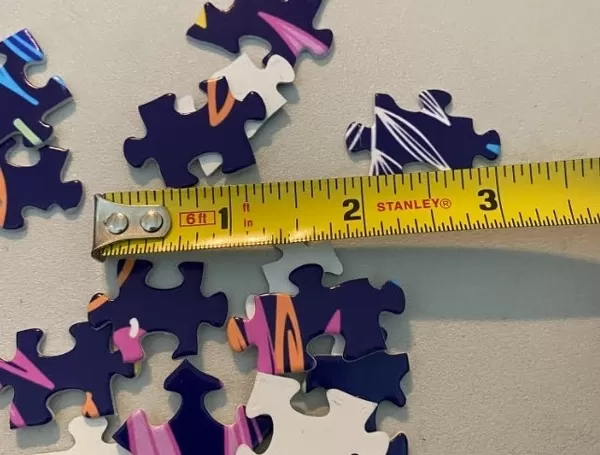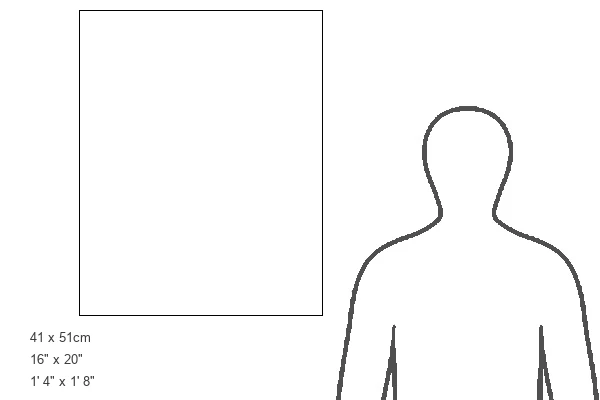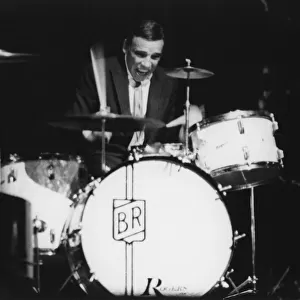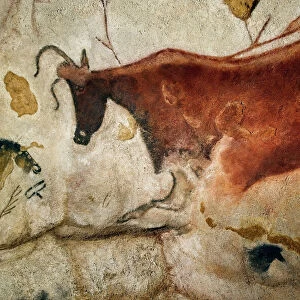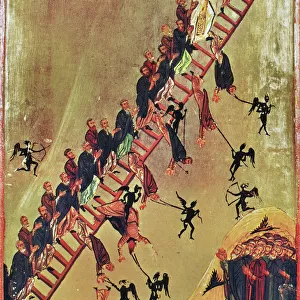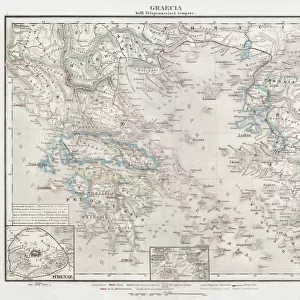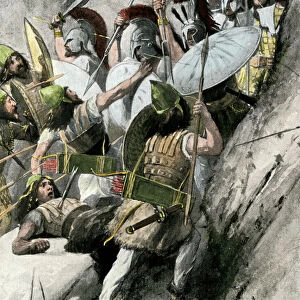Jigsaw Puzzle > Arts > Artists > S > Walter Smalling
Jigsaw Puzzle : Musical theories of Pythagoras, 1492. Creator: Unknown
![]()

Jigsaw Puzzles from Heritage Images
Musical theories of Pythagoras, 1492. Creator: Unknown
Musical theories of Pythagoras, 1492. Men playing musical instruments and making sounds. At top left, an anvil is struck with hammers. Top right: Pythagoras playing the musical scale on bells and on water-glasses. He has made a sort of xylophone using glasses filled with ever smaller amounts of water. Bottom left: Pythagoras discovery of the dependence of the musical intervals on certain arithemtical ratios of lengths of strings at the same tension. Bottom right: Pythagoras and Philolaus experimenting with musical pipes. Illustration from "Theorica musicae" (Theory of music) by Franchino Gaffurio
Heritage Images features heritage image collections
Media ID 36370219
© Heritage Art/Heritage Images
Anvil Bell Bells Experiment Experimental Experimentation Glasses Hammer Hammers Instrument Instruments Musicians Philosopher Philosophers Philosophy Pipes Pythagoras Pythagoras Of Samos Scale Sound String Stringed Instrument Tools Vibration Walters Art Museum Xylophone Ancient Greek Experimenting Playing An Instrument
Jigsaw Puzzle (520 Pieces)
Discover the fascinating world of ancient musical theories with our captivating jigsaw puzzle from Media Storehouse. This intriguing puzzle, featuring the enigmatic work of an unknown artist from Heritage Images, depicts Musical Theories of Pythagoras, dated 1492. Witness the captivating image of men engaged in making music, with an anvil at the top left struck by hammers, symbolizing Pythagoras' groundbreaking discoveries in the realm of sound and harmony. Assemble this intricate puzzle to unlock the mysteries of the past and ignite your curiosity. A perfect addition to any home or office, this puzzle promises a challenging yet rewarding experience for puzzle enthusiasts and history buffs alike.
Made in the USA, 520-piece puzzles measure 16" x 20" (40.6 x 50.8 cm). Every puzzle is meticulously printed on glossy photo paper, which has a strong 1.33 mm thickness. Delivered in a black storage cardboard box, these puzzles are both stylish and practical. (Note: puzzles contain small parts and are not suitable for children under 3 years of age.)
Jigsaw Puzzles are an ideal gift for any occasion
Estimated Product Size is 40.5cm x 50.8cm (15.9" x 20")
These are individually made so all sizes are approximate
Artwork printed orientated as per the preview above, with landscape (horizontal) or portrait (vertical) orientation to match the source image.
FEATURES IN THESE COLLECTIONS
> Animals
> Insects
> Hemiptera
> Black Scale
> Arts
> Art Movements
> Medieval Art
> Arts
> Artists
> S
> Walter Smalling
> Arts
> Minimalist artwork
> Monochrome artwork
> Fine art
> Arts
> Minimalist artwork
> Monochrome artwork
> Monochrome paintings
> Europe
> Greece
> Related Images
> Historic
> Ancient civilizations
> Ancient Greece
> Greek history
EDITORS COMMENTS
This image, titled "Musical theories of Pythagoras," dates back to 1492 and is an intriguing illustration from "Theorica musicae" (Theory of music) by Franchino Gaffurio. The print depicts a group of men engaged in musical exploration and experimentation. At the top left, an anvil is struck with hammers, possibly symbolizing the physical origins of sound. Pythagoras, the ancient Greek philosopher famed for his mathematical discoveries, is shown at the top right, playing the musical scale on bells and water-glasses. He has ingeniously created a xylophone-like instrument using glasses filled with ever smaller amounts of water. This innovative approach to music making reflects his groundbreaking theories on the mathematical relationships between musical intervals. At the bottom left, Pythagoras is depicted making a significant discovery – the dependence of musical intervals on certain arithmetic ratios of string lengths at the same tension. This revelation revolutionized the understanding of music and its connection to mathematics. The bottom right corner of the image shows Pythagoras and Philolaus experimenting with musical pipes. Their intense focus on the pipes underscores their dedication to unraveling the mysteries of music and sound. This 15th-century illustration is a testament to the enduring fascination with the intersection of art, science, and human curiosity.
MADE IN THE USA
Safe Shipping with 30 Day Money Back Guarantee
FREE PERSONALISATION*
We are proud to offer a range of customisation features including Personalised Captions, Color Filters and Picture Zoom Tools
SECURE PAYMENTS
We happily accept a wide range of payment options so you can pay for the things you need in the way that is most convenient for you
* Options may vary by product and licensing agreement. Zoomed Pictures can be adjusted in the Cart.




